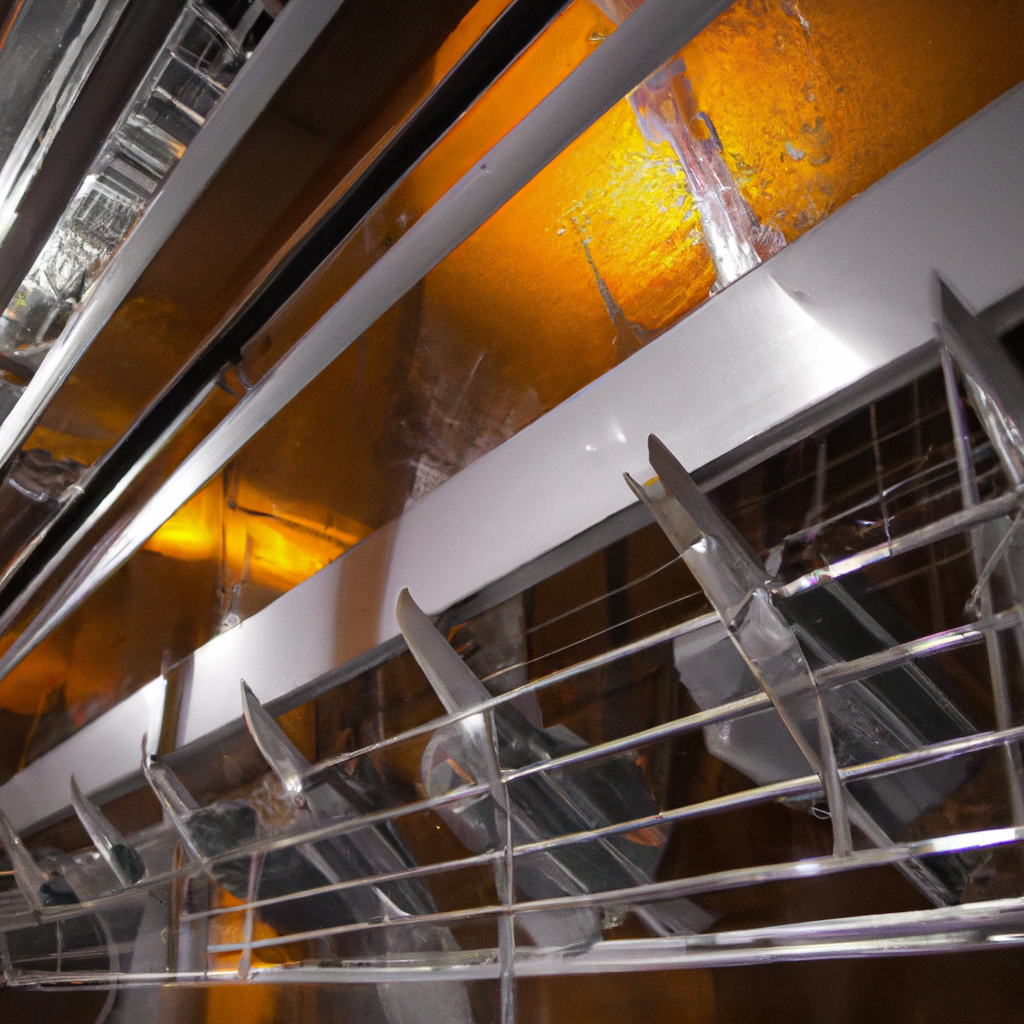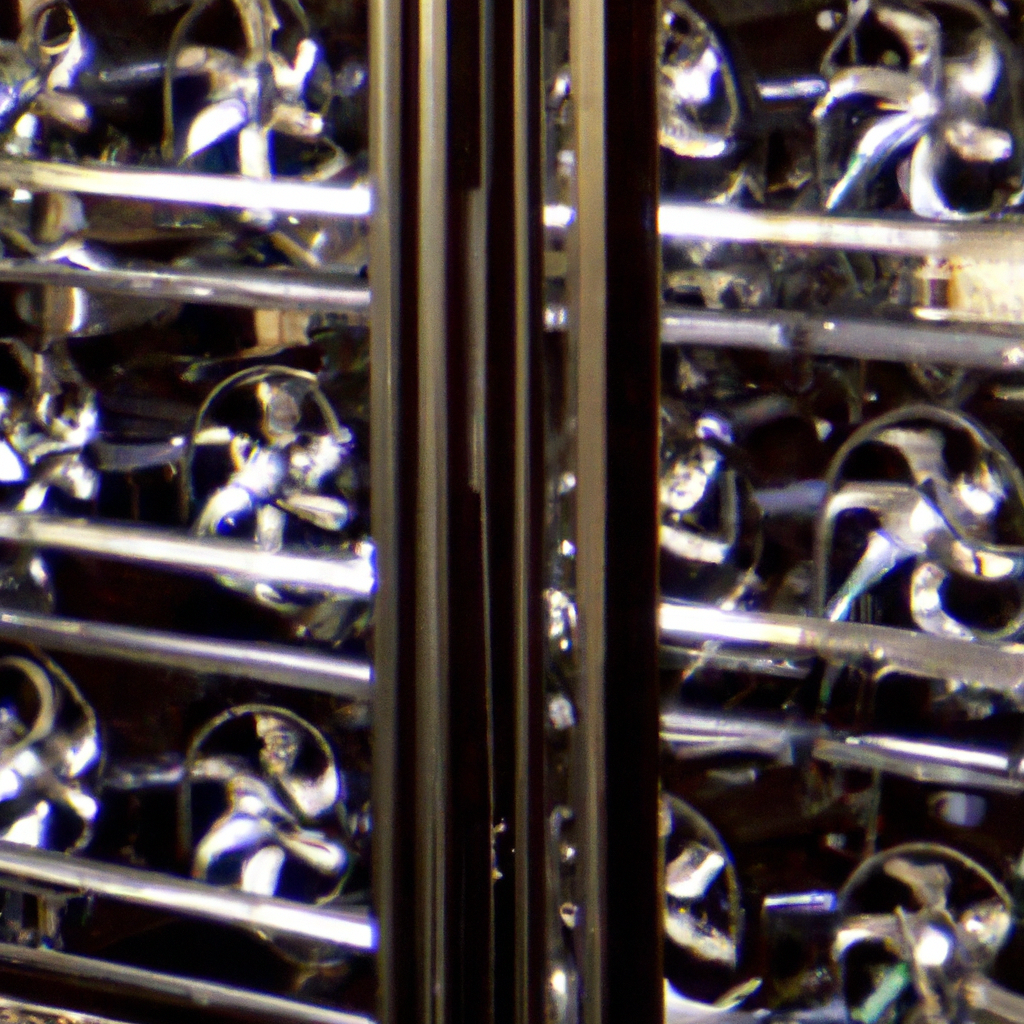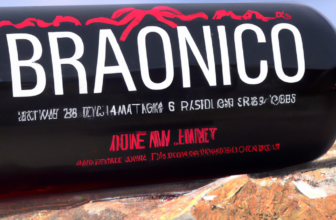
-
Article Summary
- Top Cooling Units for Wine Cellars
- Key Takeaways
- Introduction: The Importance of Proper Wine Storage
- The Different Types of Wine Cooling Units
- Self-Contained Systems
- Split Systems
- Ducted Systems
- Choosing the Right Cooling Unit
- Installation and Maintenance
- FAQ Section
- What is the ideal temperature for a wine cellar?
- Can I use a regular air conditioner in my wine cellar?
- How often should I service my wine cooling unit?
- What is the lifespan of a wine cooling unit?
- Can I install a wine cooling unit myself?
- Conclusion: The Key to Perfect Wine Storage
- Revisiting the Key Takeaways
Top Cooling Units for Wine Cellars

[youtubomatic_search]
Key Takeaways
- Wine cooling units are essential for maintaining the optimal temperature and humidity for wine storage.
- There are several types of wine cooling units, including self-contained, split, and ducted systems.
- Top brands for wine cooling units include WhisperKOOL, CellarPro, and Wine Guardian.
- Choosing the right cooling unit depends on factors such as the size of the cellar, the type of wine, and the local climate.
- Proper installation and maintenance of the cooling unit are crucial for its efficiency and longevity.
Introduction: The Importance of Proper Wine Storage
Wine is a delicate product that requires specific conditions to maintain its quality. The temperature and humidity of the storage environment significantly affect the wine’s aging process and overall taste. This is where wine cooling units come into play. They are designed to provide the optimal conditions for wine storage, ensuring that your collection remains in perfect condition for years to come.
The Different Types of Wine Cooling Units
There are several types of wine cooling units, each with its own set of advantages and considerations. The three main types are self-contained, split, and ducted systems.
Self-Contained Systems
Self-contained systems are the most common and easiest to install. They are designed to fit into a wall in the wine cellar, with the evaporator and condenser housed in one unit. Examples of top self-contained systems include the WhisperKOOL SC Series and the CellarPro 1800 Series.
Split Systems
Split systems separate the evaporator and condenser, allowing for more flexible installation options. The condenser can be placed in a location where heat and noise won’t be an issue, while the evaporator stays in the cellar. The WhisperKOOL Platinum Split Series and the CellarPro 4000S Split System are excellent examples of this type.
Ducted Systems
Ducted systems, like the Wine Guardian Ducted Cooling Unit, offer the most discreet option. They can be installed away from the cellar, with cool air ducted into the space and warm air ducted out. This eliminates the need for a visible cooling unit in the cellar.
Choosing the Right Cooling Unit
Choosing the right cooling unit for your wine cellar depends on several factors. The size of the cellar is a primary consideration, as it determines the cooling capacity needed. The type of wine you plan to store also matters, as different wines require different storage temperatures. Additionally, the local climate can affect the cooling unit’s efficiency, especially if the cellar is located in a hot or humid area.
Installation and Maintenance
Proper installation and maintenance of the cooling unit are crucial for its efficiency and longevity. It’s recommended to have a professional install the unit to ensure it’s set up correctly. Regular maintenance, including cleaning and servicing, can help prevent issues and extend the unit’s lifespan.
FAQ Section
What is the ideal temperature for a wine cellar?
The ideal temperature for a wine cellar is between 55 and 58 degrees Fahrenheit, with a humidity level of 60-70%.
Can I use a regular air conditioner in my wine cellar?
Regular air conditioners are not recommended for wine cellars as they are not designed to maintain the specific temperature and humidity levels required for wine storage.
How often should I service my wine cooling unit?
It’s recommended to service your wine cooling unit at least once a year to ensure it’s operating efficiently.
What is the lifespan of a wine cooling unit?
The lifespan of a wine cooling unit can vary, but with proper maintenance, they can last for 10-15 years or more.
Can I install a wine cooling unit myself?
While it’s possible to install a wine cooling unit yourself, it’s recommended to have a professional do it to ensure it’s set up correctly and operating efficiently.
Conclusion: The Key to Perfect Wine Storage
Wine cooling units are an essential component of any serious wine collector’s arsenal. They provide the optimal conditions for wine storage, ensuring that your collection ages gracefully and maintains its quality. With a variety of types and brands available, you can find the perfect cooling unit for your specific needs. Remember, proper installation and maintenance are crucial for the unit’s efficiency and longevity. So, invest in a quality wine cooling unit and enjoy the fruits of your collection for years to come.
Revisiting the Key Takeaways
- Wine cooling units are essential for maintaining the optimal temperature and humidity for wine storage.
- There are several types of wine cooling units, including self-contained, split, and ducted systems.
- Top brands for wine cooling units include WhisperKOOL, CellarPro, and Wine Guardian.
- Choosing the right cooling unit depends on factors such as the size of the cellar, the type of wine, and the local climate.
- Proper installation and maintenance of the cooling unit are crucial for its efficiency and longevity.
[youtubomatic_search]






